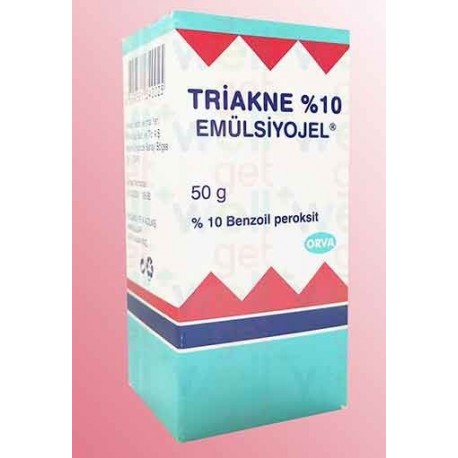Volume discounts
| Quantity | Discount | You Save |
|---|---|---|
| 2 | 5% | Up to $3.90 |
| 3 | 10% | Up to $11.70 |
| 4 | 15% | Up to $23.40 |
| 5 | 20% | Up to $39.00 |
More info
Acnecide 10% emulsion gel is applied on the skin.
Active ingredient
It contains 100 mg of benzoyl peroxide in 1 gram.
Excipients
Polyacrylamide / C13-14 isoparaffin / laureth-7, disodium EDTA, dimethicone, octyldodecanol, cetostearyl alcohol, zinc lactate, superpolistat, steareth 2, steareth 20, purified water.
What is Acnecide and what is it used for?
• Acnecide is a product that can be used on the skin. It belongs to a group of drugs called topically used antiacne preparations.
• Acnecide contains 100 mg benzoyl peroxide in 1 gram as an active ingredient. Benzoyl
Peroxide is an effective agent against a type of bacteria that causes acne on the skin.
• Acnecide , in a polypropylene bottle containing 50 g of product, with a polyethylene locked cap.
is available.
• Acnecide is used in the regional treatment of acne (acne). Severe or nodulocystic
It can also be used as an adjunct to systemic treatment in acne (the type of acne consisting of large, delicate nodules and cysts that leave deep scars on the skin).
How to use Acnecide ?
Instructions for appropriate use and dose / frequency of administration
Unless otherwise recommended by your doctor; It is sufficient to apply Acnecide once a day; However, it can be applied twice a day if deemed necessary by your doctor.
The best reduction in lesions (tissue damage) is seen after approximately 8-12 weeks of Acnecide use. Regular and continuous use is required to obtain clinical response.
If there is still no response after 4 weeks of using Acnecide , stop using the product and consult your doctor. In any case, do not use Acnecide for more than 3 months in a one-time treatment.
Application route and method
It is applied by rubbing on the skin.
Apply Acnecide in a thin layer after washing and drying the affected area with a soft cleanser that is not irritating.
Different age groups
Use in children
The safety and efficacy of Acnecide in children under the age of 12 have not been studied.
Use in the elderly
There is no specific recommendation regarding the use of Acnecide in the elderly.
Special use cases
Kidney / Liver failure:
The safety and efficacy of the use of Triacne in patients with renal / hepatic insufficiency is unknown.
If you have the impression that the effect of Acnecide is too strong or too weak, talk to your doctor or pharmacist.
If you use more Acnecide than you should
As a result of the excessive application of Acnecide on the skin, systemic (affecting the whole body) side effects are not expected due to absorption through the skin.
With more application of Acnecide than recommended, the risk of skin irritation will increase. If this happens, stop your treatment and consult your doctor.
In case of accidental swallowing, nausea, vomiting, abdominal discomfort and diarrhea may occur, consult a doctor immediately.
If you have used Acnecide more than you should, talk to a doctor or pharmacist.
If you forget to use Acnecide
3. What are the possible side effects of Acnecide?
Like all medicines, people who are sensitive to the substances contained in Acnecide may have side effects.
If any of the following occur, stop using Acnecide and IMMEDIATELY inform your doctor or contact the emergency department of your nearest hospital.
Unknown:
Severe allergic reactions (rash, itching / swelling especially of the face, tongue and throat, severe dizziness, difficulty breathing)
These are all very serious side effects.
If you have one of these, it means you have a serious allergy to Acnecide . You may need urgent medical attention or hospitalization.
The following frequency groups are used:
Very common: It can be seen in at least one of 10 patients.
Common: less than one in 10 patients, but more than one in 100 patients.
Uncommon: less than one in 100 patients, but more than one in 1,000 patients. Rare: less than one in 1,000 patients, but more than one in 10,000 patients.
Very rare: may be seen less than one in 10,000 patients.
Unknown: the frequency cannot be estimated from the available data.
Very common;
Dryness of the skin
Redness
• Peeling
Burning sensation
Common;
Itching
Pain sensation in the skin, stinging
Skin irritation
Unusual;
• Allergic contact dermatitis (skin inflammation caused by the direct contact of some substances with the skin)
Unknown;
• Percentage swelling
Change in skin color
Other skin reactions such as irritation and pain
In case of allergic contact dermatitis or facial swelling, stop using TRIACNE immediately and consult your doctor.


